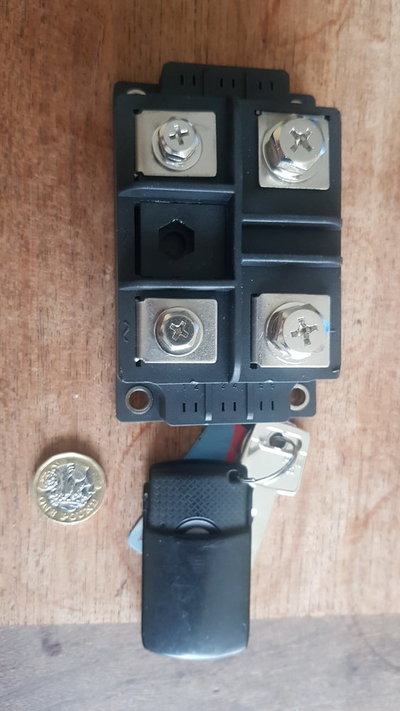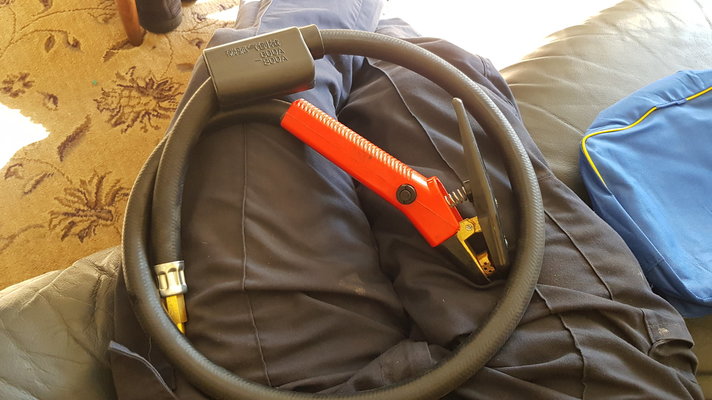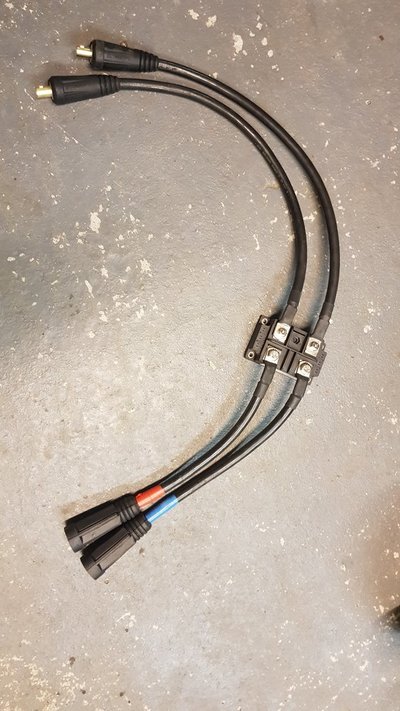zeppelin builder
Member
- Messages
- 2,166
- Location
- peoples republic of scotland
If you want to mess about with gouging try some gouging stick rods
groovy
If you want to mess about with gouging try some gouging stick rods
They are fun I've been meaning to do a YouTube video on using them for some time but not had the time yetgroovy
These were what I was on about they are great in a pinch but I've never used carbon arc so can't really compareGet hold of some MMA gouging electrodes, just arc the weld metal away, no compressed air, noise or vast amounts of dross
We tried it yesterday, it will work on ac, but then we tried it on electrode -ve what a difference (170amp) using a 5mm carbon rod.
I ordered a 400amp bridge rectifer unit for my Oxford, from the bay of fleas.
I'll update this thread when it arrives from the far east....



It looks coolI purchased the the air arc torch from Amazon for £39.00, the bridge rectifier (400amp 1600volt) for £25.00 and some gouging carbons from DWS...^^^^^.
Dinze plugs and sockets another £16.00.
I had air hose and welding cable for the carbon torch connections.
So for £80.00, I set up my carbon arc torch.
My son used it to remove the welds holding the hinge blocks to the safe carcases so we could salvage the 10mm plate doors.
This weekend I hope to try some test pieces, cut some 10mm and 15mm plate, then spray weld some "T" fillet welds and mma a couple for fillets.
Then air arc out the fillets.
With what I've seen so far it appears to be a worth while addition to my welding kit.
Bearing in mind that the process can be hard on power supplies/units you have to consider your needs, I use a direct drive 13cfm V2 compressor 50ltr tank, it copes well but a larger tank would help.
View attachment 308126 View attachment 308127 View attachment 308128
It looks cool
How many amps did you use?
Carbon rod diameter? 5mm?
I believe that if you make an inductor and add 2 big capacitors (one as close as possible to the rectier output and one on the welding sockets always on the DC side) and surely a big heat sink on your rectifier , with maybe a cooling fan.Tried using my Oxford on AC at first, which didn't work very well, which is why I purchased the rectifier to convert the current to DC.
So we changed power supply to my Lorch T220 Pro, just to try it on DC.
Which made all the difference wound the Lorch up to 170amp max on dc -ve (mma dc), I have since learnt that carbon arc gouging should be used on dc +ve.
We only took out about 4 or 5 inches of weld, but it was an easy and clean weld removal.
I'm planning on having a play this weekend, with the Oxford using the rectifier...
I intend using a heatsink, I have a piece of alloy plate about 1/2" x 7" x 11", just need to mill a flat contact surface into it for the rectifier.I believe that if you make an inductor and add 2 big capacitors (one as close as possible to the rectier output and one on the welding sockets always on the DC side) and surely a big heat sink on your rectifier , with maybe a cooling fan.
It will work better and last longer.
I intend using a heatsink, I have a piece of alloy plate about 1/2" x 7" x 11", just need to mill a flat contact surface into it for the rectifier.
I don't know about the inductor capacitors, does a big Oxford oil cooled need them when its connected to 415v (2 of 3ph)???
Any ideas on the specs for the capacitors, the Oxfords output is 300amp@50v or 220amps @80v.The capacitors go after the rectifier and smooth the DC
AC rated capacitors on DC will workAny ideas on the specs for the capacitors, the Oxfords output is 300amp@50v or 220amps @80v.
Being as capacitors are cheap as chips generally, over spec-ing is better....
Rectifierrectier
Any news?Any ideas on the specs for the capacitors, the Oxfords output is 300amp@50v or 220amps @80v.
Being as capacitors are cheap as chips generally, over spec-ing is better....
The rectifer is a slight improvement over ac.Any news?
Tried using my Oxford on AC at first, which didn't work very well, which is why I purchased the rectifier to convert the current to DC.
So we changed power supply to my Lorch T220 Pro, just to try it on DC.
Which made all the difference wound the Lorch up to 170amp max on dc -ve (mma dc), I have since learnt that carbon arc gouging should be used on dc +ve.
We only took out about 4 or 5 inches of weld, but it was an easy and clean weld removal.
I'm planning on having a play this weekend, with the Oxford using the rectifier...
 and used 1" or 3/4" carbon rods. I remember one of the regular repairs carried out by the electrician was replacing diodes. You could tell when they were on the way out because the arc would start to stutter and push back at you instead of blowing metal away.
and used 1" or 3/4" carbon rods. I remember one of the regular repairs carried out by the electrician was replacing diodes. You could tell when they were on the way out because the arc would start to stutter and push back at you instead of blowing metal away.



